第3章 GUY DE MAUPASSANT(3)
Among the theories of the anatomist of "Madame Bovary," there are two which appear without ceasing in his Correspondence, under one form or another, and these are the ones which are most strongly evident in the art of De Maupassant. We now see the consequences which were inevitable by reason of them, endowed as Maupassant was with a double power of feeling life bitterly, and at the same time with so much of animal force. The first theory bears upon the choice of personages and the story of the romance, the second upon the character of the style. The son of a physician, and brought up in the rigors of scientific method, Flaubert believed this method to be efficacious in art as in science. For instance, in the writing of a romance, he seemed to be as scientific as in the development of a history of customs, in which the essential is absolute exactness and local color. He therefore naturally wished to make the most scrupulous and detailed observation of the environment.
Thus is explained the immense labor in preparation which his stories cost him--the story of "Madame Bovary," of "The Sentimental Education," and "Bouvard and Pecuchet," documents containing as much minutiae as his historical stories. Beyond everything he tried to select details that were eminently significant. Consequently he was of the opinion that the romance writer should discard all that lessened this significance, that is, extraordinary events and singular heroes. The exceptional personage, it seemed to him, should be suppressed, as should also high dramatic incident, since, produced by causes less general, these have a range more restricted. The truly scientific romance writer, proposing to paint a certain class, will attain his end more effectively if he incarnate personages of the middle order, and, consequently, paint traits common to that class. And not only middle-class traits, but middle-class adventures.
From this point of view, examine the three great romances of the Master from Rouen, and you will see that he has not lost sight of this first and greatest principle of his art, any more than he has of the second, which was that these documents should be drawn up in prose of absolutely perfect technique. We know with what passionate care he worked at his phrases, and how indefatigably he changed them over and over again. Thus he satisfied that instinct of beauty which was born of his romantic soul, while he gratified the demand of truth which inhered from his scientific training by his minute and scrupulous exactness.
The theory of the mean of truth on one side, as the foundation of the subject,--"the humble truth," as he termed it at the beginning of "Une Vie,"--and of the agonizing of beauty on the other side, in composition, determines the whole use that Maupassant made of his literary gifts. It helped to make more intense and more systematic that dainty yet dangerous pessimism which in him was innate. The mid- dle-class personage, in wearisome society like ours, is always a caricature, and the happenings are nearly always vulgar. When one studies a great number of them, one finishes by looking at humanity from the angle of disgust and despair. The philosophy of the romances and novels of De Maupassant is so continuously and profoundly surprising that one becomes overwhelmed by it. It reaches limitation; it seems to deny that man is susceptible to grandeur, or that motives of a superior order can uplift and ennoble the soul, but it does so with a sorrow that is profound. All that portion of the sentimental and moral world which in itself is the highest remains closed to it.